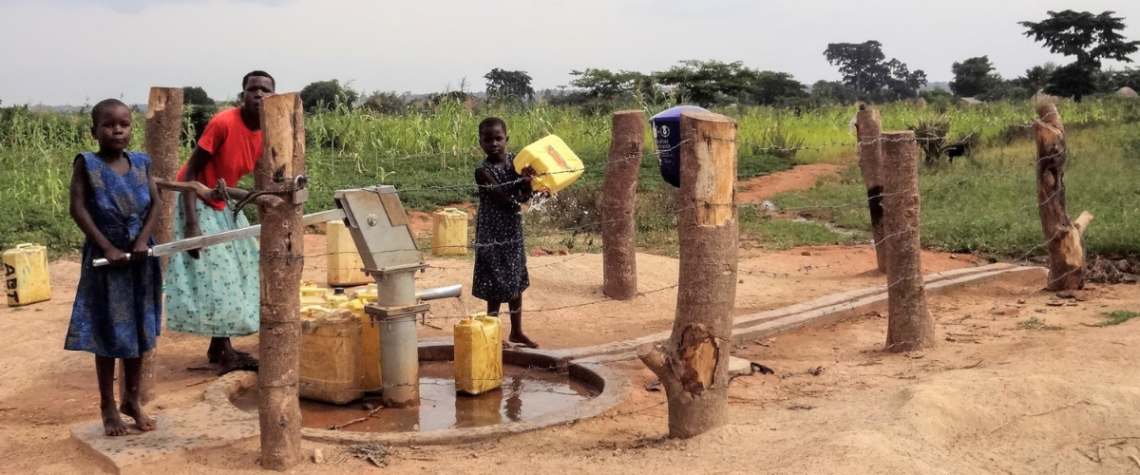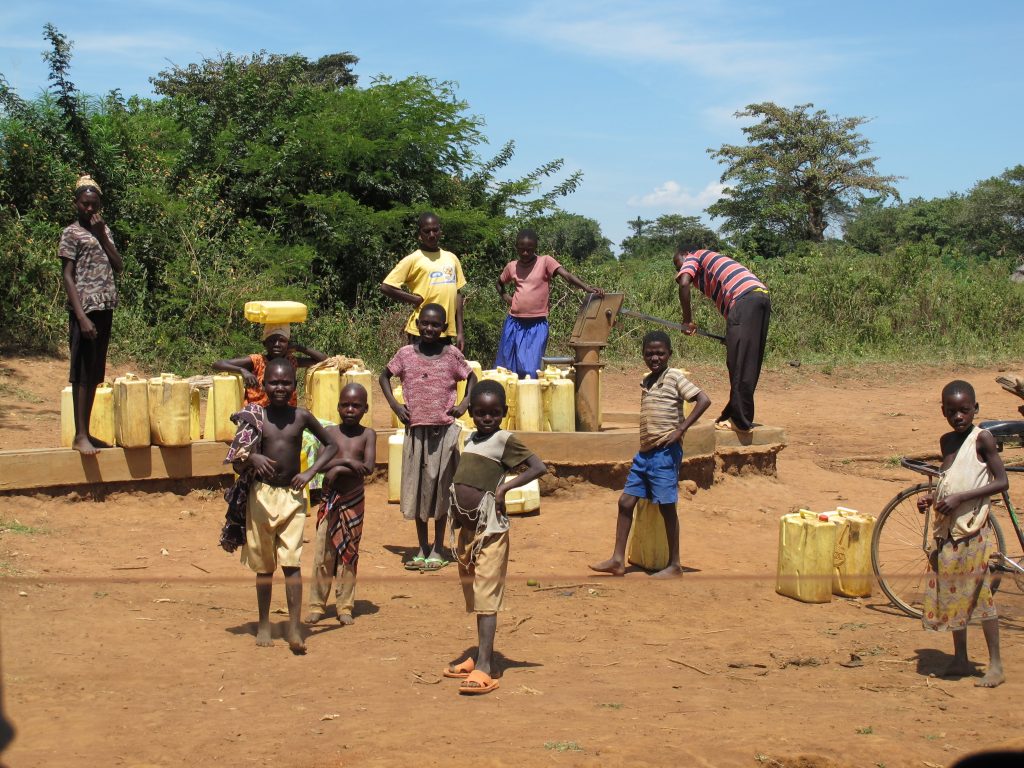
Water, Water, Everywhere
Water, water, everywhere, but not enough to drink. That is the position we found ourselves in recently. When the school first opened its doors in 2007 there was no water on the campus. As is the case in most of Uganda, those living in Chelekura had to spend an inordinate amount of time standing in line at a community well, waiting their turn to fill Jerry cans. Students at JPSS were no different than the local citizenry; they took their turn also at the community well. Then in 2015, we commissioned drilling for a well and were successful in bringing good clean water, with a purifier on the hand pump, to the campus. In support of the local community and reciprocating their generosity, we opened the tap to the locals.

Now, we find ourselves in a dilemma. The pump is no longer adequate to meet the demands of the 650+ students and 50 teachers and support staff. Now there are long lines at the campus well and our students again are spending so much time waiting their turn. And students are leaving the campus in search of other wells with shorter lines.
Enter Ugandan Water Project: a non-profit humanitarian organization, based in the United States whose mission is to provide safe and accessible water to communities in Uganda. An initial water survey of the capacity of the well and the demand for the water brought good news. Our well is more than capable of meeting the needs of everyone for a long time. Lack of water is not the problem. The problem is the number of access points. We are still using a hand pump and consuming the water as it is pumped. We are now partnered with UWP to modernize the pump and dramatically increase the number of access points to get water for both the students and the local community.
The first step is to add a solar powered pump and a huge above-ground storage tank that will be continuously fed. At the same time, we are installing a grid of underground pipes that will feed all the essential buildings on campus with taps (kitchen, dorms, science labs, etc.). The water pumped into the storage tank will fill the underground pipes via gravity pull from the storage tank. A separate line with multiple taps will service the local community and another separate piping grid will supply water to the nearby primary school. The final step is to tie the six 10,000-liter water collection tanks we must have to capture rain water into the overall system. We expect to be fully operational in the next couple months.




